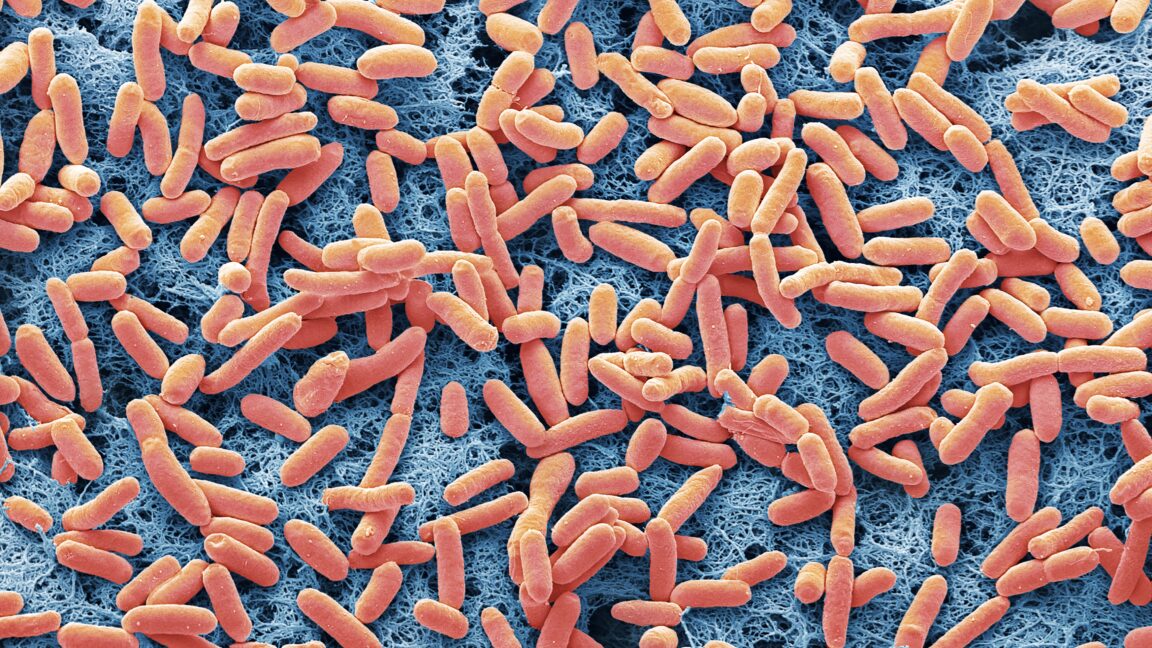All the Produce in Season in June (and the Best Ways to Use It)
Even as children, we in the U.S. learn that June brings good things—warmer weather, ice cream trucks, and most significantly, summer break from school. As an adult, all of those things still matter to me, but the arrival of summer produce has crept up to the top of my June list of good things. In this monthly article, I take a look at the fruits and veggies coming into season and some incredible ways you can use them. Let’s dive into June's offerings. Why seasonal and local produce is greatLong distance shipping for out-of-season produce is convenient, but there is usually a price to pay with literal higher prices or lesser quality. Using seasonal produce is a step toward supporting smaller farms situated somewhere closer to where you live rather than a monoculture farm somewhere far away. A big, healthy harvest with shorter shipping distances likely means a cheaper price tag for you. And hopefully the produce exhibits the best possible flavor profile since it doesn’t have to travel great distances to arrive at your market. Buying local and in season means you’ll possibly see a greater variety of tender greens and delicate fruits that don’t travel out of state well. Those little strawberries that pop up at the farmers market are so juicy and delicate you’d never see them packed up and shipped out across the country—they’d be turned into jam before they got a chance to leave. Go to those summer farmers markets downtown and reap the benefits of the juiciest summer fruit. What’s in season right nowYou’re probably seeing it already, but everywhere from tiny produce markets to big box grocery stores are growing fuller with the very beginnings of summer produce glut, and the prices are dropping. Personally, I’m celebrating the low berry prices with morning smoothies.For those who are growing their own food, keep up with our Home and Garden section for tips.The new produce coming in for June:ApricotsSweet CherriesStrawberriesBlueberriesRaspberriesBlackberriesBeetsBroccoli Cabbage Garlic scapesGreen peasMustard greensZucchini & summer squashSay, "au revoir" to:AsparagusArugulaRampsParsnipsProduce in peak season:Beet greensLettuceRadishes and their greensRhubarbSpinachTurnipsChardSnap peasSnow peasNote that your specific region may be warmer or cooler, or farther away—so don’t worry if floods of strawberries haven’t arrived yet, or if you still have loads of wild ramps growing in the yard. Nature will do its thing, and we’ll continue trying to keep up.What to cook with your spring bountyFruitsJune is the beginning of having all the fun you want to have when it comes to recipes. Let’s start with fruit. We’re looking at loads of berries for the next few months and the beginnings of stone fruits, so I recommend warming up those ovens. I know that sounds too hot, but think of the pies! Cherry pies, Strawberry-rhubarb, apricot and blackberry, blueberry-goat-cheese tarts—you simply must make some. To help you along, here’s my fail-proof way to lattice pie crust, and my best advice on preventing soggy fruit pies. They’re well worth a read if you’ve had trouble in the past.If you’d rather be stuck in a room with a pack of wild 7-year-olds than make a pie, OK fine. Make a fruit trifle with leftover cake, stuff delicious biscuits with summer fruit and whipped cream, and why not take a crack at your own homemade berry ice cream. I made vanilla bean ice cream with a swirl of fresh raspberry compote and I felt pretty damn pleased with myself. If you’re shopping for affordable ice cream machines, I just tested and reviewed this Cuisinart.As I mentioned, fruit smoothies always welcome a handful of frozen berries. I should mention: Freezing your berries is the best way to reduce waste.If you’re using berries to top yogurt or granola, there’s no need to freeze it, but if you’re baking with fruit, making jams, or blending smoothies, freezing is extremely helpful. Pop the fruit in the freezer in the container it came in. After a few hours, they’ll be solid and you can dump them into a zip-top freezer bag for easier freezer storage.Vegetables All the cruciferous veggies are going strong right now, so go ahead and get that fiber. Use shaved broccoli and cabbage in a salad. Wilt spinach, chard, or mustard greens down in a hearty soup. My absolute favorite thing to do with summer zucchini is to make Thai kai jiao. You can use different vegetables in this dish, but zucchini is my all-time favorite. You also can’t go wrong with grilling big, fat planks of summer squash and drizzling them with a light vinaigrette. Got lots of crisp lettuce? Well, you can always bulk up your warm salads or do what I do and add it to every sandwich. Bacon, egg, cheese, and lettuce. Meatball parm sub and lettuce. Peanut butter and—OK, maybe not that one. Pay special attention to the fleeting produce like rhubarb, ramps, and scapes. They’re around for just a blink so grab them up. Try roasting your rhubarb with strawberries for a sweet, tart, and caramelized treat. Enjoy the best of June produce, and hopefully we’ll get a peek at tomatoes at the end of the month.
#all #produce #season #june #best
All the Produce in Season in June (and the Best Ways to Use It)
Even as children, we in the U.S. learn that June brings good things—warmer weather, ice cream trucks, and most significantly, summer break from school. As an adult, all of those things still matter to me, but the arrival of summer produce has crept up to the top of my June list of good things. In this monthly article, I take a look at the fruits and veggies coming into season and some incredible ways you can use them. Let’s dive into June's offerings. Why seasonal and local produce is greatLong distance shipping for out-of-season produce is convenient, but there is usually a price to pay with literal higher prices or lesser quality. Using seasonal produce is a step toward supporting smaller farms situated somewhere closer to where you live rather than a monoculture farm somewhere far away. A big, healthy harvest with shorter shipping distances likely means a cheaper price tag for you. And hopefully the produce exhibits the best possible flavor profile since it doesn’t have to travel great distances to arrive at your market. Buying local and in season means you’ll possibly see a greater variety of tender greens and delicate fruits that don’t travel out of state well. Those little strawberries that pop up at the farmers market are so juicy and delicate you’d never see them packed up and shipped out across the country—they’d be turned into jam before they got a chance to leave. Go to those summer farmers markets downtown and reap the benefits of the juiciest summer fruit. What’s in season right nowYou’re probably seeing it already, but everywhere from tiny produce markets to big box grocery stores are growing fuller with the very beginnings of summer produce glut, and the prices are dropping. Personally, I’m celebrating the low berry prices with morning smoothies.For those who are growing their own food, keep up with our Home and Garden section for tips.The new produce coming in for June:ApricotsSweet CherriesStrawberriesBlueberriesRaspberriesBlackberriesBeetsBroccoli Cabbage Garlic scapesGreen peasMustard greensZucchini & summer squashSay, "au revoir" to:AsparagusArugulaRampsParsnipsProduce in peak season:Beet greensLettuceRadishes and their greensRhubarbSpinachTurnipsChardSnap peasSnow peasNote that your specific region may be warmer or cooler, or farther away—so don’t worry if floods of strawberries haven’t arrived yet, or if you still have loads of wild ramps growing in the yard. Nature will do its thing, and we’ll continue trying to keep up.What to cook with your spring bountyFruitsJune is the beginning of having all the fun you want to have when it comes to recipes. Let’s start with fruit. We’re looking at loads of berries for the next few months and the beginnings of stone fruits, so I recommend warming up those ovens. I know that sounds too hot, but think of the pies! Cherry pies, Strawberry-rhubarb, apricot and blackberry, blueberry-goat-cheese tarts—you simply must make some. To help you along, here’s my fail-proof way to lattice pie crust, and my best advice on preventing soggy fruit pies. They’re well worth a read if you’ve had trouble in the past.If you’d rather be stuck in a room with a pack of wild 7-year-olds than make a pie, OK fine. Make a fruit trifle with leftover cake, stuff delicious biscuits with summer fruit and whipped cream, and why not take a crack at your own homemade berry ice cream. I made vanilla bean ice cream with a swirl of fresh raspberry compote and I felt pretty damn pleased with myself. If you’re shopping for affordable ice cream machines, I just tested and reviewed this Cuisinart.As I mentioned, fruit smoothies always welcome a handful of frozen berries. I should mention: Freezing your berries is the best way to reduce waste.If you’re using berries to top yogurt or granola, there’s no need to freeze it, but if you’re baking with fruit, making jams, or blending smoothies, freezing is extremely helpful. Pop the fruit in the freezer in the container it came in. After a few hours, they’ll be solid and you can dump them into a zip-top freezer bag for easier freezer storage.Vegetables All the cruciferous veggies are going strong right now, so go ahead and get that fiber. Use shaved broccoli and cabbage in a salad. Wilt spinach, chard, or mustard greens down in a hearty soup. My absolute favorite thing to do with summer zucchini is to make Thai kai jiao. You can use different vegetables in this dish, but zucchini is my all-time favorite. You also can’t go wrong with grilling big, fat planks of summer squash and drizzling them with a light vinaigrette. Got lots of crisp lettuce? Well, you can always bulk up your warm salads or do what I do and add it to every sandwich. Bacon, egg, cheese, and lettuce. Meatball parm sub and lettuce. Peanut butter and—OK, maybe not that one. Pay special attention to the fleeting produce like rhubarb, ramps, and scapes. They’re around for just a blink so grab them up. Try roasting your rhubarb with strawberries for a sweet, tart, and caramelized treat. Enjoy the best of June produce, and hopefully we’ll get a peek at tomatoes at the end of the month.
#all #produce #season #june #best
0 Commentaires
·0 Parts
·0 Aperçu











